The key to a safe anchorage is the same as the key to prime real estate: location, location, location. When I anchor a boat for the night, I’m almost always sleeping aboard, so it’s not enough for the boat to stay afloat and stay put. The anchorage needs to be quiet and still if I’m going to get a good sleep. Even if a day comes to a quiet close, an anchorage that isn’t well protected from wind, waves, and currents will make me anxious and I’ll wake up frequently to check on the conditions.
I’ve had only four anchorages go wrong (so far). In the middle of a night aboard my dory skiff, I had to sit up in my sleeping bag and row across a cove to get back into the lee after a wind shift; that morning I woke up stranded by a low tide. During an overnight outing in our Escargot canal boat, anchored in the upper reaches of a tidal river, the four of us aboard spent a noisy, sleepless night when the river current accelerated with the falling tide. On my solo in that same boat on the Everett sloughs, I slept well enough but lost my best anchor to a submerged snag.
While those anchorages were annoying, my worst anchorage could have turned deadly. It was in DeHorsey Passage, 17 rowing miles shy of Prince Rupert, British Columbia, on my second cruise up the Inside Passage in 1987. Cindy and I had been underway for a month, rowing and sailing from Puget Sound aboard ROWENA, the Gokstad faering I’d built for the trip. In the days before that anchorage, we had been traveling north along Grenville Channel. We napped during the day when the flood tide was flowing against us and rowed at night when we could take advantage of the slack and ebb tides. At Baker Inlet, 11 miles from the end of Grenville, the water had turned chalky green with the glacial silt flowing out of the Skeena River.
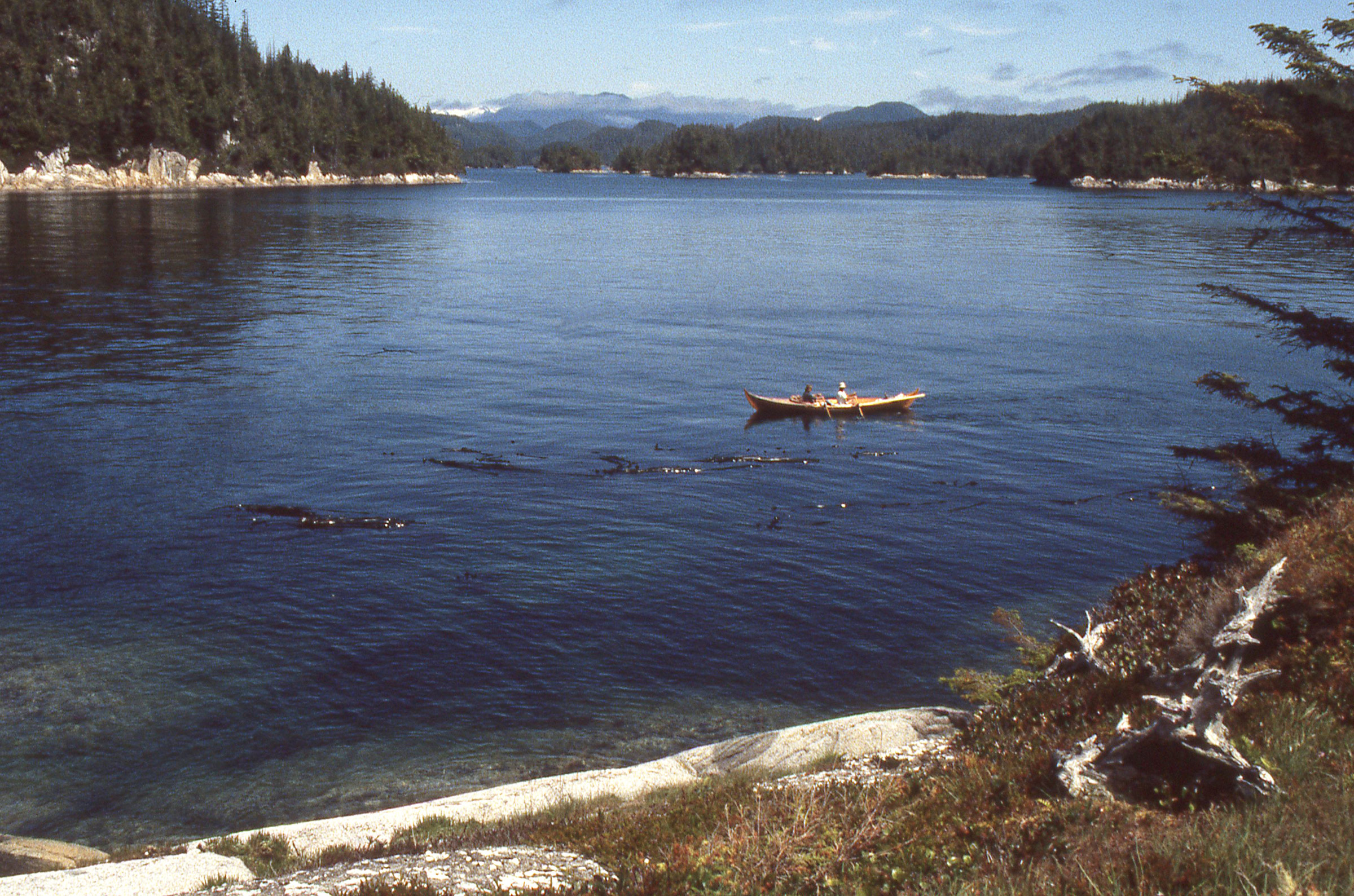
We stopped for the night in a narrow passage like this one, but in the dark near the mouth of a river and dropped anchor in the very brief slack before the tide began to plummet 22′.
We left the channel and stayed close to the mainland shore. Here’s how I described in my journal the events of the night of July 10:
We headed up the mouth of the river. In one south-facing bay we pulled in for a rest stop and in the next bay, facing west, we dropped anchor to wait out the ebb. Cooked up popcorn and dinner and napped on the floorboards with the canopy cloth just pulled up like a blanket.
We woke just before slack and headed north along the edge of the Skeena, tucking into small bays to get out of the wind-versus-ebb chop and the current tumbling over a shoal. As it grew dark, we got ready to cross to DeHorsey Island. We put on foulweather gear and life vests, got the flashlights and new batteries, and took off for a 3-1/2-mile crossing. The moon rose, making it easier to look for the debris carried downriver, but mostly it was a sprint. The navigation-aid lights came on very late. We crossed a noisy chop over a shoal and then hit a tide shear where the current wrapped around Kennedy Island.
We had been keeping track of our progress by watching the dim profiles of mountains at the mouth of the Skeena, and, when it was too dark for that, the position of stars over the ridges.
I called “way enough” and as we drifted through the shear, the bow moved to starboard. We’d have to work to make the top of DeHorsey. We put on the speed and got to the island’s shore and found the current still very strong there. We got just a ways upstream and decided it might not be worth it. We drifted backward as I deliberated. I figured the small pass between DeHorsey and Smith island to the west would be the best place for us to anchor if conditions went wrong overnight. We regained the lost ground and the tide was still against us as we continued north along the east side of DeHorsey, but I figured it would split in about a mile. We kept on and picked up speed and finally got to the split. With the tide in our favor now, we ate an orange and peeled off clothing since we were both drenched with sweat. We were getting quite tired. The fight against the tide had worn us out.
In the channel between DeHorsey and Smith islands, it was hard to see in the shadows of the moonlight. Several points of DeHorsey went by and we finally spotted a bottleneck where there were cabins on Smith and a small islet in midchannel. I dropped the anchor without the chain to get the depth—less that 12′, not enough for us to spend the night. We moved to the other side of the island—20′. I connected the chain and set the hook and then we raised the canopy over the cockpit.
Just as soon as we bedded down, I heard a staccato noise like a beaver gnawing on the bow. Was the anchor dragging? Fifteen minutes later it happened again and I heard the gurgling of the current against the hull. I looked out and the channel was like a river. We got up and packed up.
The anchor rode was tied directly to the painter. I had been eager to get to bed, so I hadn’t tied the retrieval line to the painter so I could pull it in while seated in the cockpit and get my hands on the painter and rode without having to crawl over the bow. I had a fender tied to the end of the rode as a buoy. I told Cindy to row upstream to bring it alongside. The fender was flicking around underwater, submerged by the current. I untied the rode from the painter as Cindy shipped the oars and we drifted back downstream. The tension came on when I had the rode amidships. I was holding the rode’s bitter end in one hand.
At this point, the boat was broadside to the current and the upstream rail dipped close to the surface of the water. I fought to push myself away from the rail to keep from being pulled overboard and prevent the boat from taking on water.
I yelled to Cindy, “Don’t do anything!” I moved aft and waited for the boat to swing around. When it trailed parallel to the current, the stern facing upstream, I pulled the rode in. There was lots of tension in the line and when the anchor broke free it skipped along the bottom, each jerk shaking me hard. I got the anchor aboard and we both set to rowing hard. We worked the bow around upstream. In the reflections of lights on shore we could see the streams of the ebb’s current. We kept an eye out for logs. There was a lot of driftwood picked up by the high spring tide. We hit a line of whirlpools and I called out “Pressure left! Right! Left!” We pulled hardest on our right to keep off the rocks. In the dim light of the cloud-masked moon, Cindy was a dark shape moving wildly.
We finally made it into Inverness Passage and the current whisked us along as the glow of the not-yet-risen sun broke over the mountains to the east.
Our anchorage in DeHorsey Passage was chosen at night, in an unfamiliar place, and while we were sleep deprived and physically exhausted. The location was bad and our timing made the worst of it. July 10 was the night of the full moon and the early morning hours were the spring tide, a drop of nearly 22′. Among the islands at the mouth of the Skeena River, the currents caused by the powerful ebb have the river outflow pushing them even faster. When the tide turned at around 2:00 a.m., about the time we turned in for the night, it took only minutes for the current to build. When I had Cindy row up to the anchor buoy, the current was already at around 3 knots. Within an hour, as we were rowing north against the current to get around the corner of Smith Island into Inverness Passage, the current was likely approaching 5 knots, the limit of our speed aboard the faering. With each stroke, rowing flat out, we were making less than 1′ of headway.
Because I had never anchored in water with any current running, I wasn’t prepared for what happened when I tried to haul the anchor aboard that night. Larger boats are equipped to bring the anchor up at the bow, so even when a current is running, the boat faces it. When I brought the rode aft, the faering veered away from the flow. When the rode was amidships, the faering was square to the current. The pressure on the keel pushed it downstream but, fortunately, the faering has very slack bilges and firmed up before the rail was driven under and the boat capsized. I’d like to think that I would have let the rode go before that happened. We had just the one anchor with us and I was reluctant to lose it, though if I’d had time to think, I would have realized I could buy a replacement in Prince Rupert the next day. I’d had a fender attached to the rode, but I’d removed it before hauling the anchor aboard. If I had left the fender attached I could have let go and recovered the anchor later.
We were lucky to have rowed away from that anchorage intact. That night was over 30 years ago, but I remain grateful we survived my inexperience.![]()


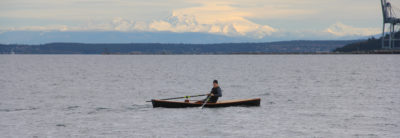

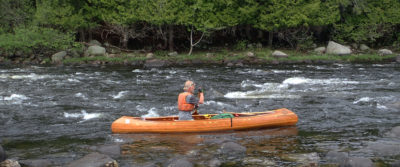
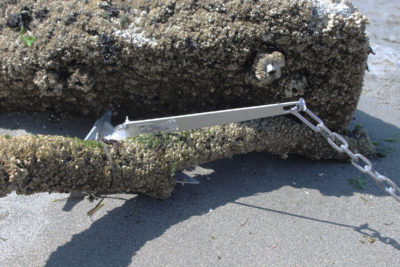
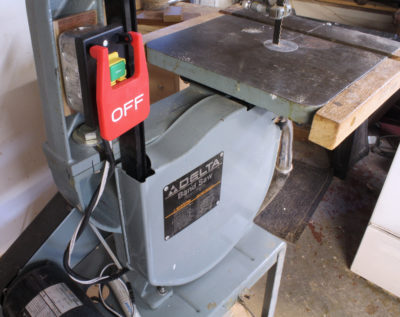
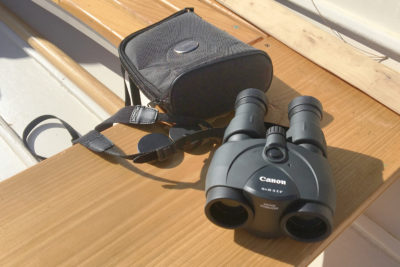
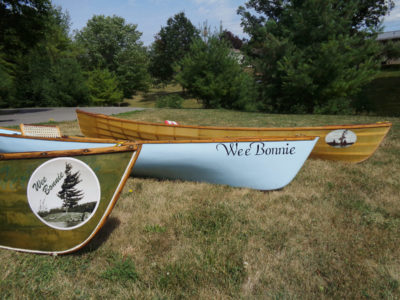
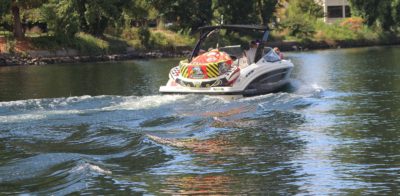
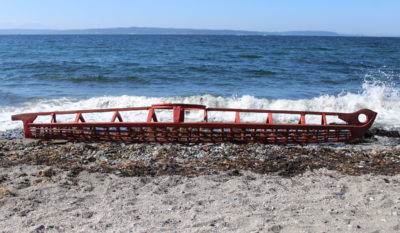
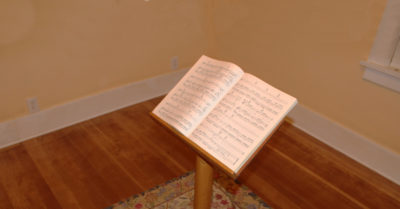
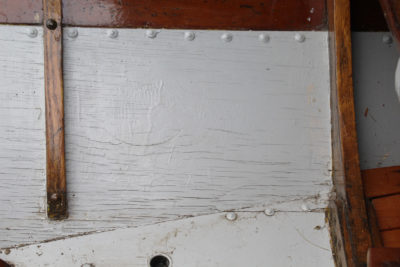
Rowing in lazy Florida waters is not as challenging as rowing in the Inside Passage. Our 18″ tidal shift over six or so hours is very tame. I think I’ll stay here with my Nor’easter Dory and Penobscot 14 and enjoy my well-deserved retirement from the public school system.
Wow, what a story and cautionary tale. Thanks.
Finding a good place to anchor for the night has to be one of the toughest challenges of small-boat cruising. So many variables to take into account. Even when you think you’ve got all the ducks lined up, things can and often do still go awry, at 2 in the morning. Many times in the wee hours I’ve begrudgingly ventured out into the cockpit, uttering unsavory oaths to myself, leaving the snug digs of the cabin, weighing anchor out of the slimy depths, and lowering oars, all whilst in my PJ’s, to find some better place. Fortunately while doing so I’ve never had to wage war against the kind of currents and tides Chris so aptly describes here.